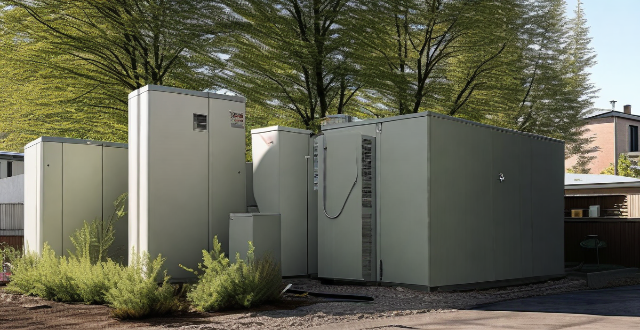Distributed energy systems (DES) are integrated systems that generate, store, and manage energy near the point of consumption. They typically include renewable energy sources, energy storage devices, and control systems. The primary goal is to optimize energy production and consumption while minimizing environmental impact and enhancing energy security. Key features of DES include decentralized generation, renewable energy sources, energy storage, intelligent control systems, flexibility, and scalability. Benefits of DES include increased energy efficiency, improved reliability, reduced environmental impact, enhanced energy independence, and cost savings. Examples of DES include residential solar PV systems, commercial buildings with cogeneration, microgrids, and community energy projects.

What is a Distributed Energy System?
A distributed energy system (DES) refers to an integrated system that generates, stores, and manages energy at or near the point of consumption. It typically involves a combination of various energy resources and technologies, including renewable energy sources, energy storage devices, and control systems. The primary goal of a DES is to optimize energy production and consumption while minimizing environmental impact and enhancing energy security.
Key Features of a Distributed Energy System
- Decentralized Generation: Unlike traditional centralized power plants, DES generates electricity closer to where it will be used, reducing transmission losses and improving efficiency.
- Renewable Energy Sources: DES often incorporates renewable energy technologies such as solar photovoltaics, wind turbines, and geothermal systems to reduce reliance on fossil fuels.
- Energy Storage: Batteries, thermal storage units, or other forms of energy storage are integral parts of DES, allowing for energy management during peak demand periods and ensuring a stable supply.
- Intelligent Control Systems: Advanced control systems enable real-time monitoring and optimization of energy flows within the DES, enhancing overall performance and reliability.
- Flexibility and Scalability: DES can be designed to suit a wide range of applications, from small residential setups to large commercial or industrial complexes, and can be expanded or modified as needed.
Benefits of Distributed Energy Systems
- Increased Energy Efficiency: By generating power close to the point of use, DES reduces energy losses associated with long-distance transmission.
- Improved Reliability: With multiple energy sources and storage options, DES can continue to provide power even if one component fails or during grid outages.
- Reduced Environmental Impact: The use of renewable energy sources in DES significantly reduces greenhouse gas emissions compared to conventional power generation methods.
- Enhanced Energy Independence: DES allows consumers to take control of their energy production and consumption, potentially reducing reliance on centralized utilities.
- Cost Savings: Over time, the reduced operating costs and potential for selling excess electricity back to the grid can lead to financial savings for DES owners.
Examples of Distributed Energy Systems
- Residential Solar PV Systems: Homeowners install solar panels on their rooftops to generate electricity for their household needs, often with battery storage for nighttime use.
- Commercial Buildings with Cogeneration: Office buildings or hospitals might use cogeneration systems that produce both electricity and heat for heating and cooling purposes.
- Microgrids: These are localized energy networks that can disconnect from the main electrical grid and operate independently, particularly useful in remote areas or during widespread outages.
- Community Energy Projects: Neighborhoods or towns might collaborate on shared renewable energy projects, such as community wind farms or biomass facilities.
In conclusion, distributed energy systems represent a paradigm shift in how we generate, distribute, and consume energy. They offer numerous benefits over traditional centralized power generation methods, including increased efficiency, improved reliability, and reduced environmental impact. As technology continues to advance and more emphasis is placed on sustainability, DES is likely to play an increasingly significant role in our future energy landscape.